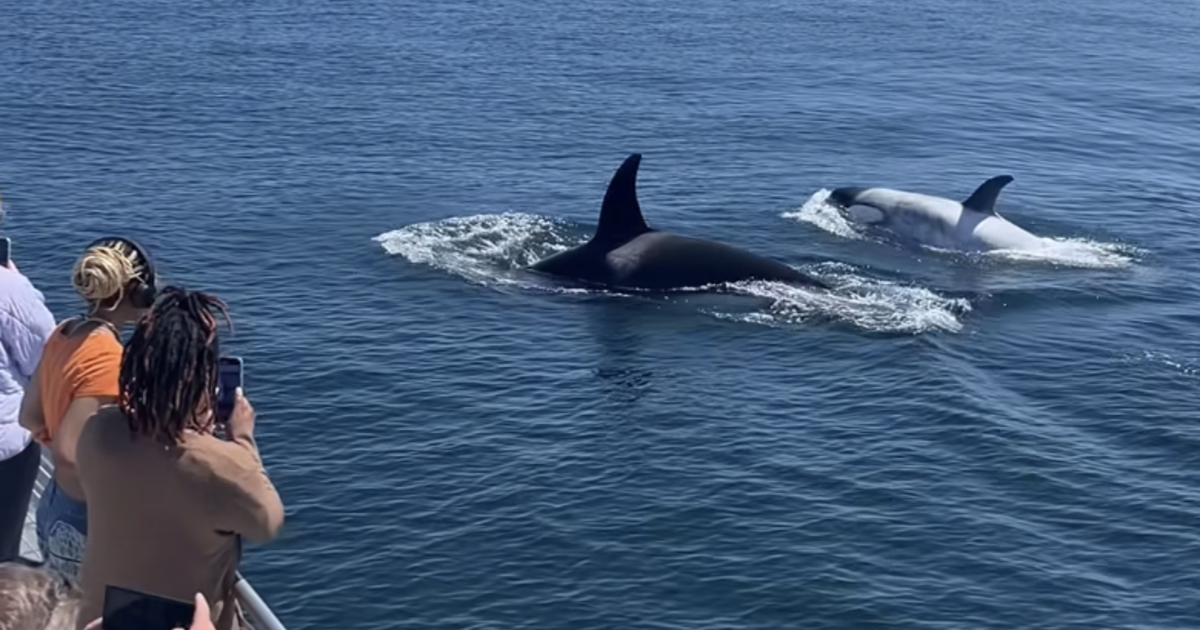A group of seafaring tourists saw something unusual while whale-watching off the coast of Southern California this week. It was a white orca, or killer whale, that has become somewhat famous in environmentalist circles up and down the Pacific Coast over the last few years.
The orca, a calf nicknamed “Frosty” because of its unusually pale appearance, was seen most recently near Newport Beach. Newport Landing Whale Watching, the tour company that led the whale-watching excursion, shared a Facebook reel on Monday that showed the creature swimming with a pod of several other orcas. The company said the pod included six or seven killer whales seen “offshore,” which usually means 10 or so miles from land.
Newport Landing Whale Watching / Facebook
Frosty has gained a certain level of celebrity since first being seen near Monterey Bay, in Northern California, in 2019, according to the Pacific Whale Watch Association. At the time, Frosty was just a newborn. The whale has since been sighted as far north as British Columbia.
Found in all of the world’s oceans, orcas are a top marine predator found near coasts and in open seas, according to the National Oceanic and Atmospheric Administration. They often have especially long lifespans, with females living between 50 and 90 years and males living between 30 and 60 years, so they don’t generally reach maturity until their pre-teen or teenage years. Experts say Frosty is part of a transient population of orcas known as Bigg’s killer whales, which depart from the behaviors of other orcas that are traditionally part of either “resident” or offshore populations.
Frosty’s lack of the typical black-and-white coloring of most killer whales is “extremely rare,” NOAA has said of orcas with a similar appearance.
The Oceanic Society, a California-based nonprofit organization focused on marine conservation, wrote in 2022 that the orca was one of five or six known killer whales that have leucism, an uncommon condition that causes a partial loss of pigmentation in some animals. That leads to the animal’s skin or coat fading to look pale, white or patchy. In 2020, researchers on a charter boat in Alaska spotted a killer whale with the same condition. At the time, a graduate student on the boat said that only eight leucistic whales had ever been seen anywhere in the world.
Leucism is not the same as albinism, where a genetic mutation prevents the production of melanin, which would give an animal its color. Creatures with albinism are usually, but not always, completely white and can have pink or red eyes. Although experts have primarily described Frosty as leucistic, some have suggested that the whale could actually have Chediak-Higashi Syndrome, an autoimmune disease that also depletes pigmentation and, like leucism, is very rare. Another famously white killer whale, nicknamed Chimo, suffered from Chediak-Higashi Syndrome and died from complications of the condition in the early 1970s. A postmortem ultimately confirmed the diagnosis.


